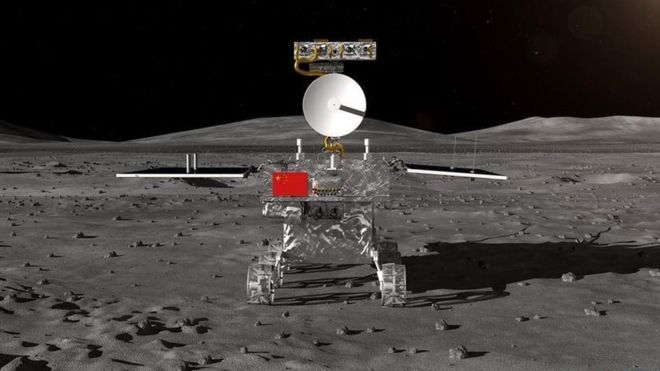Everyone, it seems, wants to go the moon now.
如今似乎人人都想到月亮上去。
In January, Chang’e-4, a Chinese robotic spacecraft including a small rover, became the first ever to land on the far side of the moon. India is aiming to launch Chandrayaan-2 this month, its first attempt to reach the lunar surface. Even a small Israeli nonprofit, SpaceIL, tried to send a small robotic lander there this year, but it crashed. In the coming decades, boots worn by visitors from these and other nations could add their prints to the lunar dust. The fascination with Earth’s celestial companion is not limited to nation-states. A bevy of companies has lined up in hopes of winning NASA contracts to deliver experiments and instruments to the moon.
1月,中国的嫦娥四号机器人探测器携带一台小型巡视器历史上首次在月球背面着陆。印度计划本月发射“月船2号”(Chandrayaan-2),是该国首次尝试到达月球表面。连以色列一家小型非营利性组织SpaceIL今年也尝试发射了一个小型机器人着陆器到月球,但坠毁了。在未来几十年里,包括前述这些在内的许多国家的到访者,可能会在月球尘埃上留下他们的鞋印。对这个地球天体同伴的迷恋不仅仅限于民族国家。许多公司都已排队等候希望获得美国国家航空航天局的合同,以便向月球递送实验和仪器。
So why go back?
为何回归登月计划?
A primary impetus for a moon stampede now? The discovery that there is water there, especially ice deep within polar craters where the sun never shines. That is a potentially invaluable source of drinking water for future astronauts visiting the moon, but also for water that can be broken down into hydrogen and oxygen. The oxygen could provide breathable air; oxygen and hydrogen could also be used as rocket propellant. Thus, the moon, or a refueling station in orbit around the moon, could serve as a stop for spacecraft to refill their tanks before heading out into the solar system.
现在竞相登月的主要动力何在?已经发现月球上有水,特别是太阳照射不到的极地陨坑深处有冰。对未来访问月球的宇航员而言,这可能是宝贵的潜在饮用水源,但也可用来分解出氢气和氧气。氧气可供呼吸;氧气和氢气还可用作火箭的推进燃料。因此,月球或月球轨道上的燃料补给站可作为航天器的停靠站,在深入太阳系前为油箱加油。

Making moon money
赚月亮钱
As these administrations wavered, entrepreneurs had begun brainstorming possible business ventures on the moon. In 2007, the X Prize Foundation announced a $20 million grand prize, bankrolled by Google, that would be awarded to the first private team that could put a robotic lander on the moon. But while no company could claim the jackpot, many have not given up on the moon as a business opportunity.
在政府摇摆不定的同时,企业家们开始集思广益,考虑在月球上进行商业经营的可能性。2007年,“X奖”基金会宣布了一项由谷歌资助的2000万美元大奖,将授予第一个能够将机器人着陆器送上月球的私资团队。虽然没有一家公司能赢得头奖,但许多公司并没有放弃把登月变为商机。
The payoffs of the moon could include helium-3 mined from the lunar soil, potentially a fuel for future fusion reactors, although practical fusion reactors are still decades away. There could be an opening for companies that would ship the ashes of loved ones to the moon as a memorial. And some private companies could carry payloads for scientific research. For instance, the far side of the moon could be ideal for optical and radio telescopes because they would not face earthly interference there. With these potential businesses, the Lunar X Prize may turn out to be a success, even though there was no winner.
登月的回报可能包括从月球土壤中开采的氦-3,这可能是未来聚变反应堆的燃料,尽管实际的聚变反应堆还需要几十年的时间才会出现。将亲人骨灰运往月球作为一种悼念的公司可能会有机会。一些私资公司可以为科学研究携带载荷。例如,月球远面可能是光学望远镜和射电望远镜的理想位置,因为那里不会受到地球的干扰。有了这些潜在的业务,就算没有赢家,月球X奖也可能是个成功。












